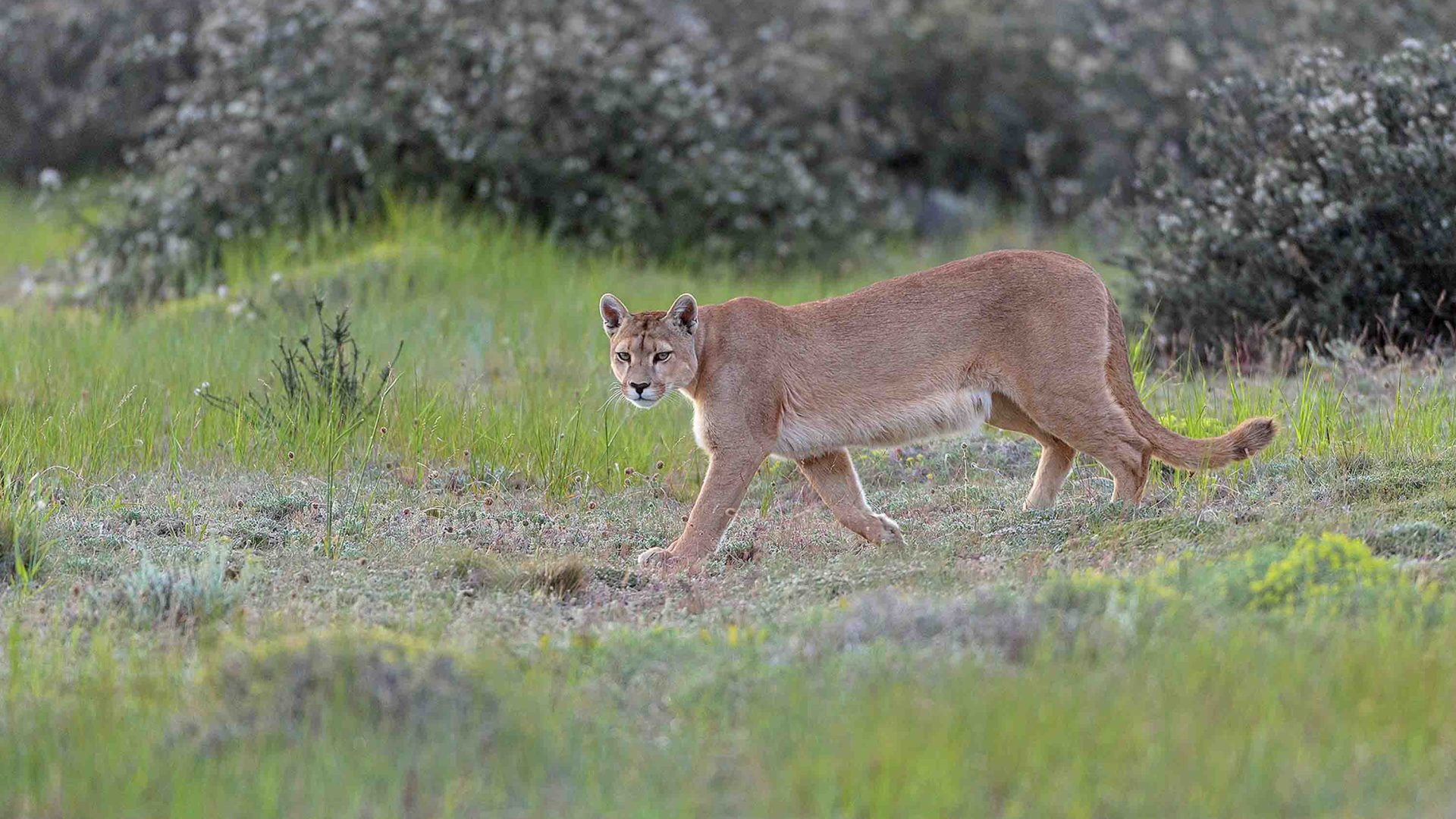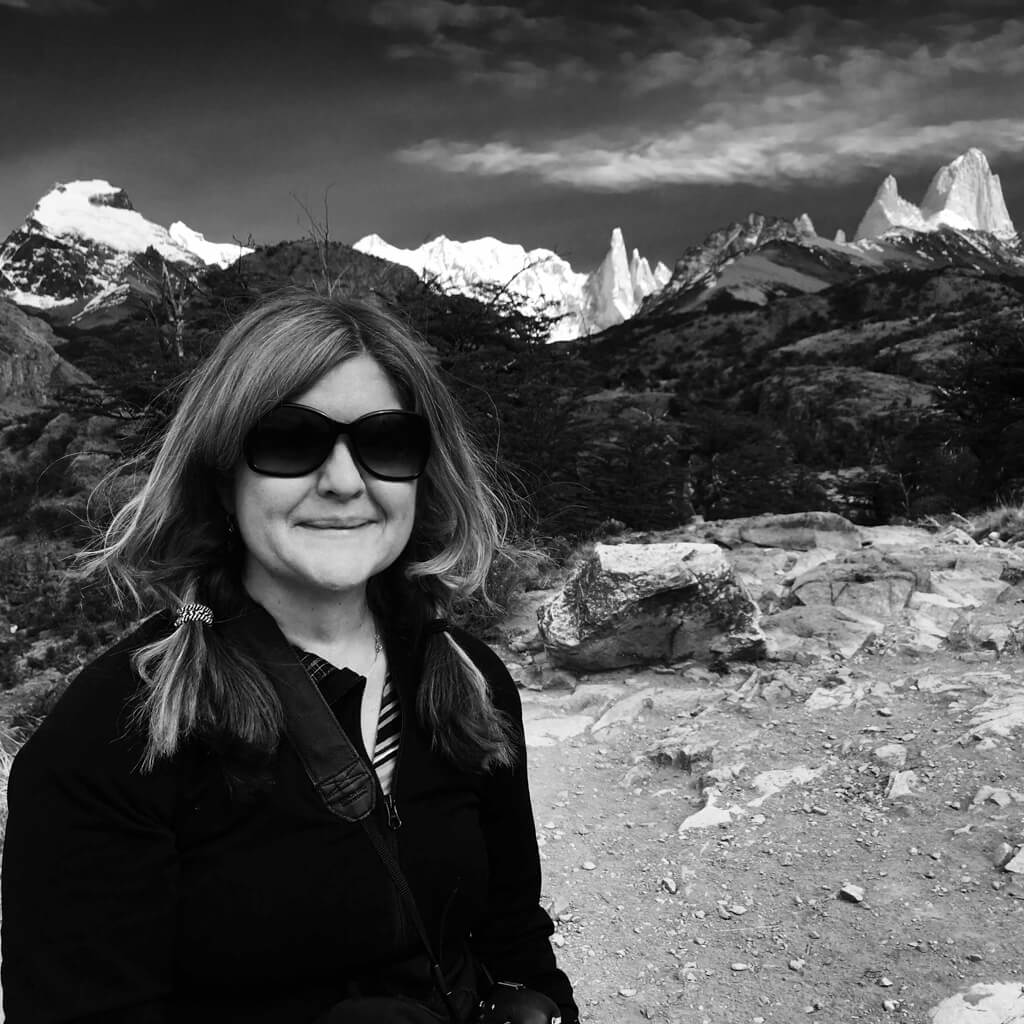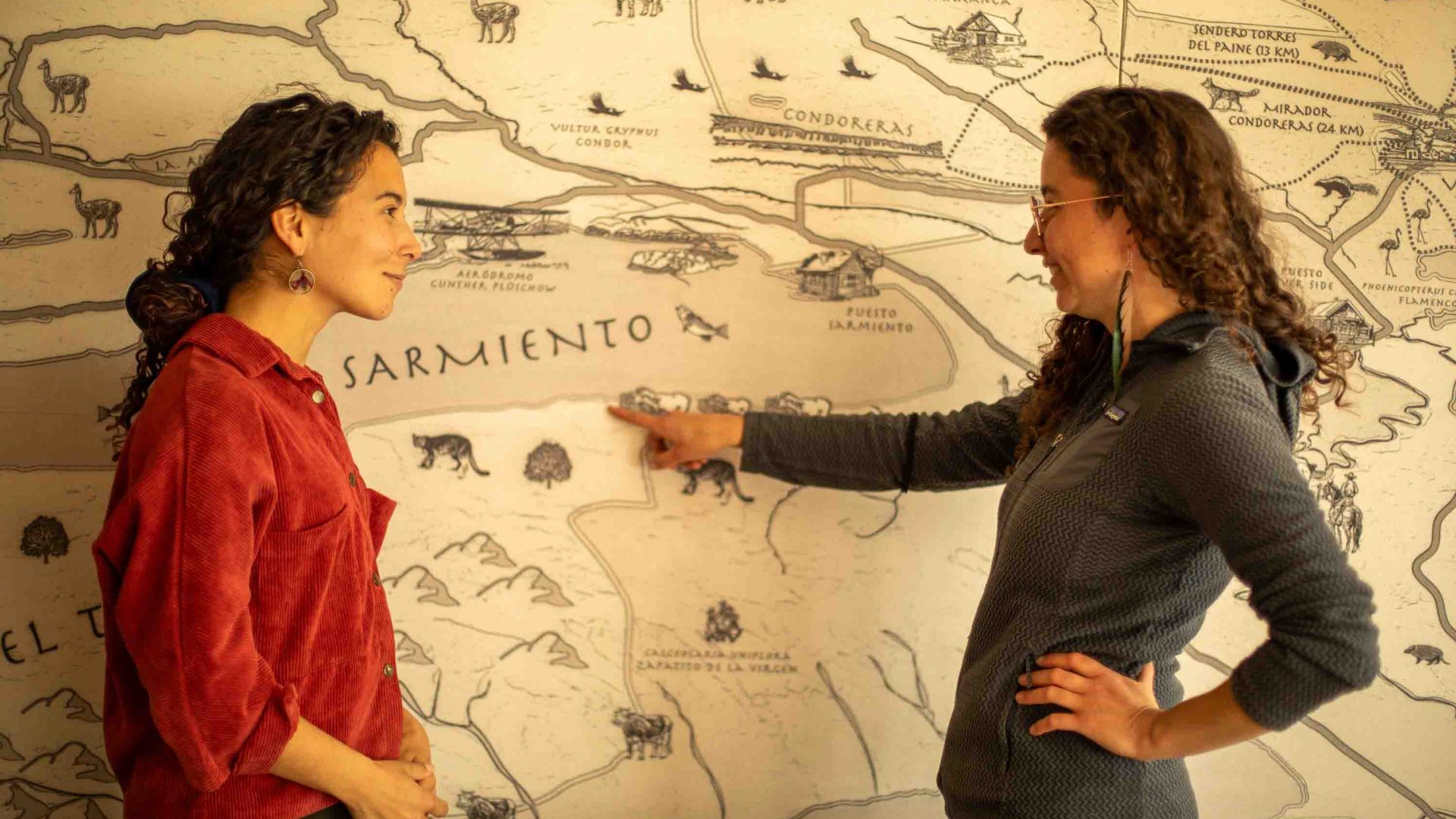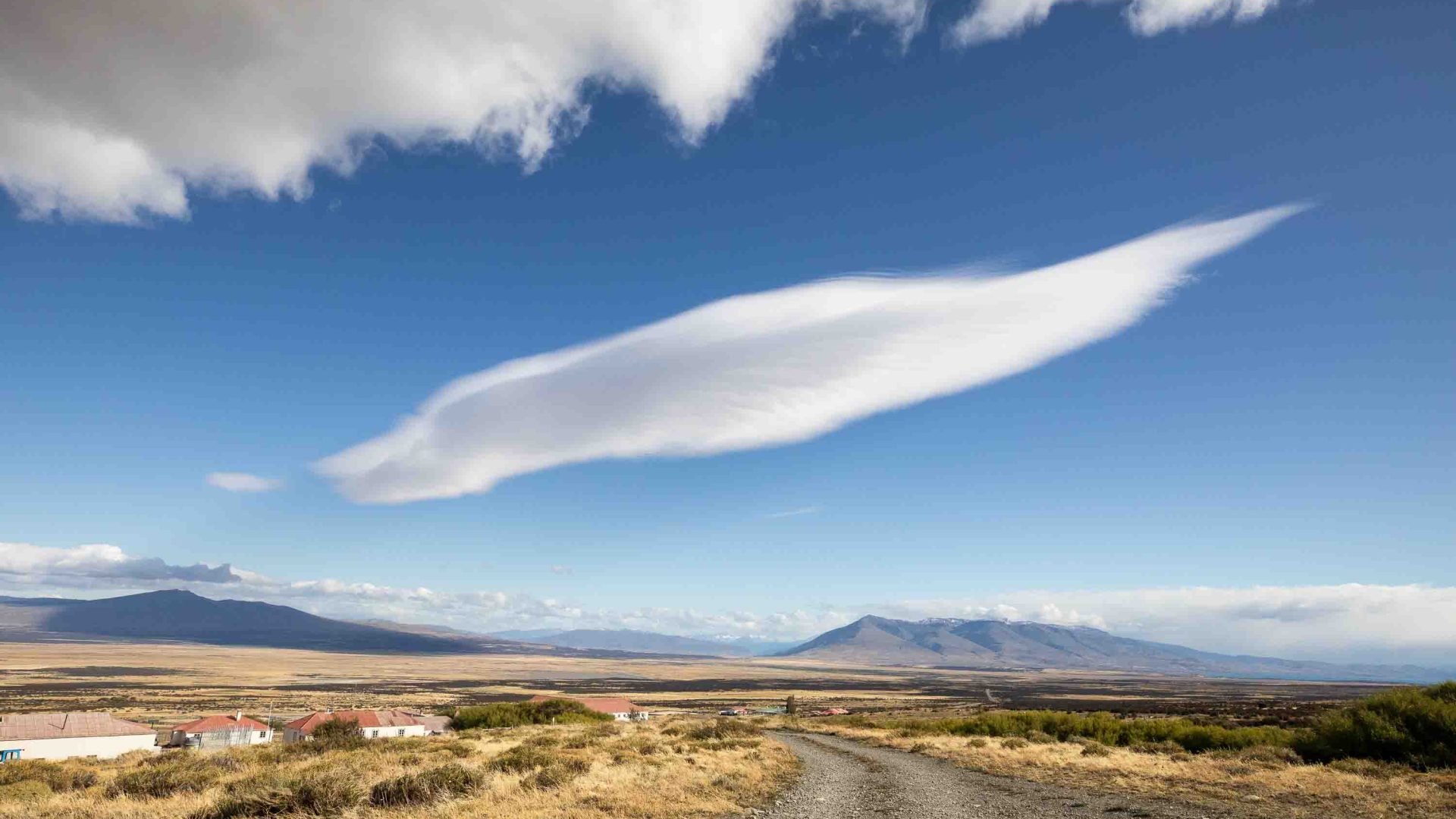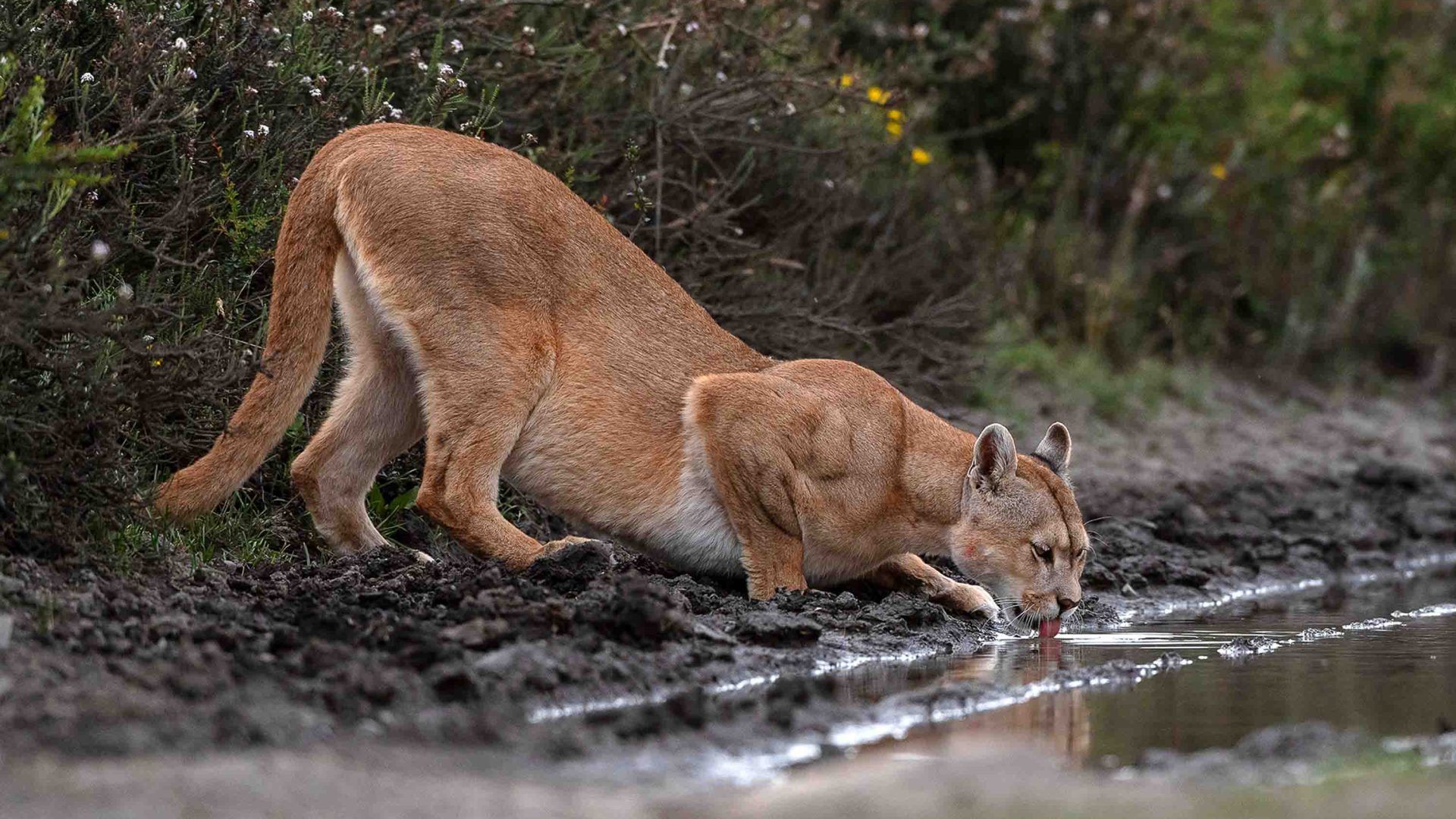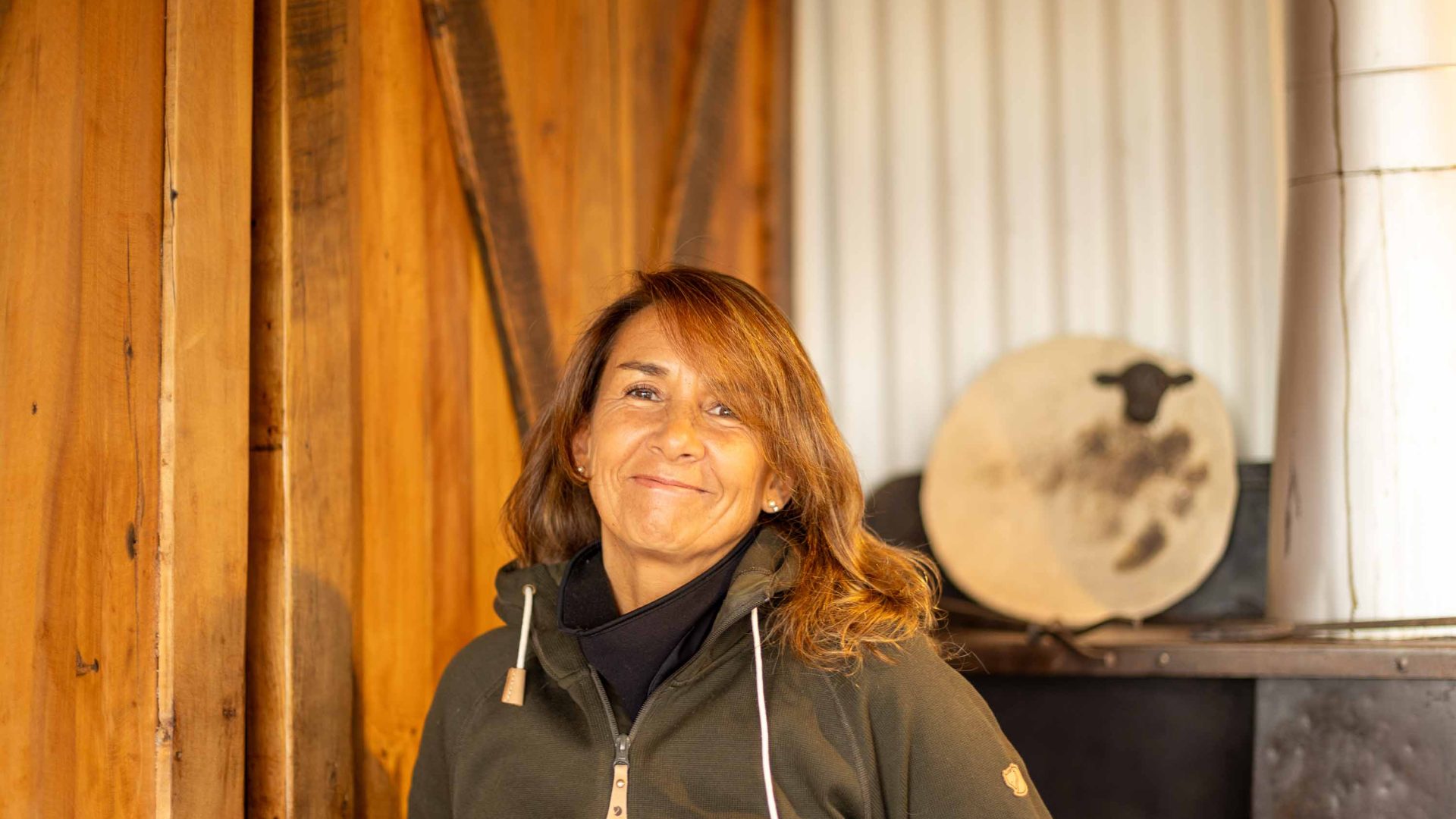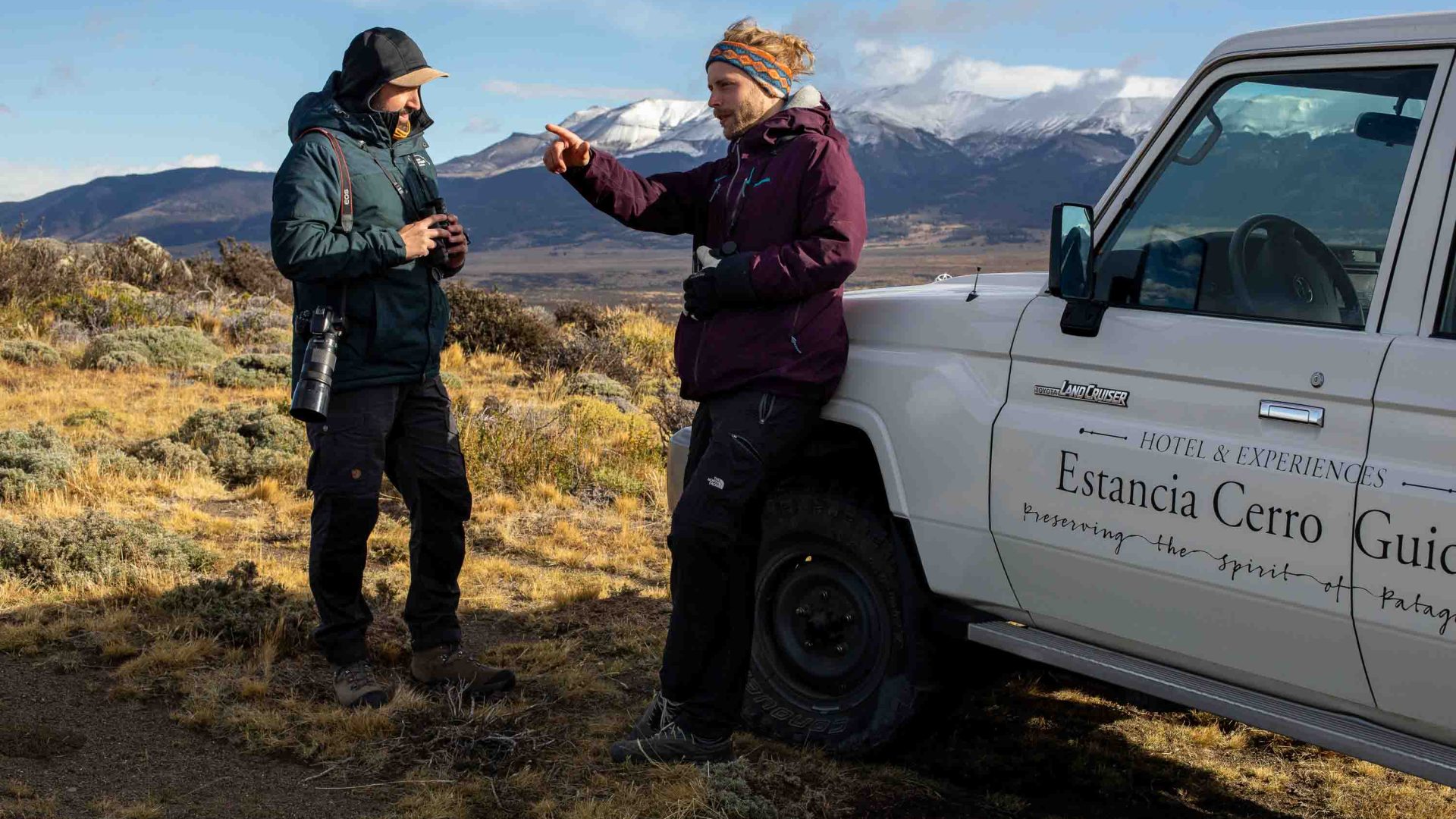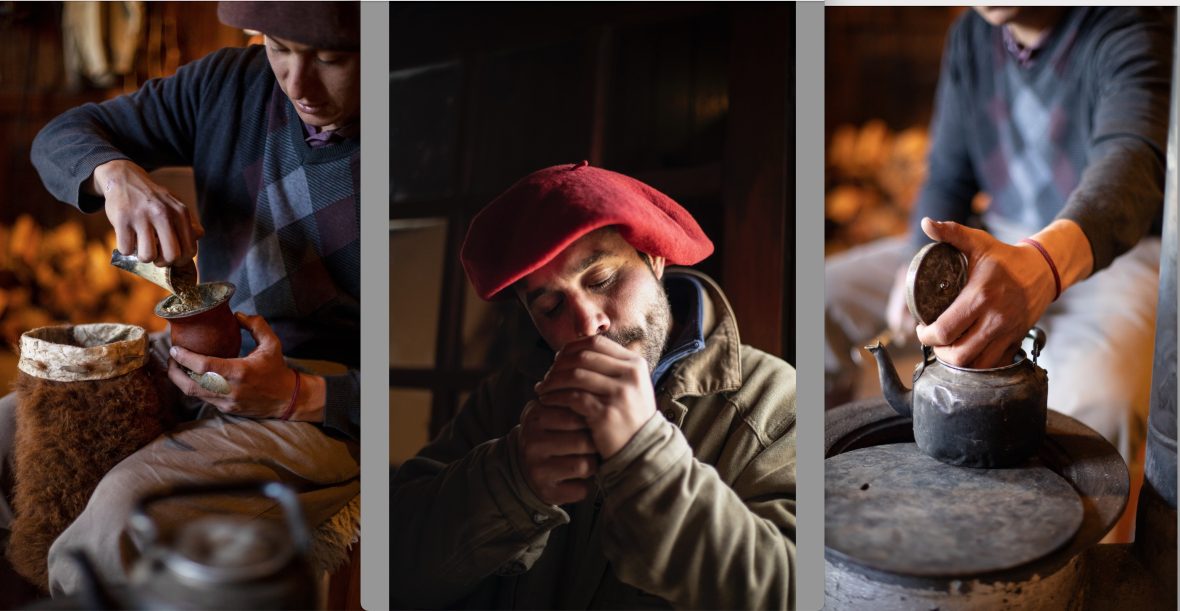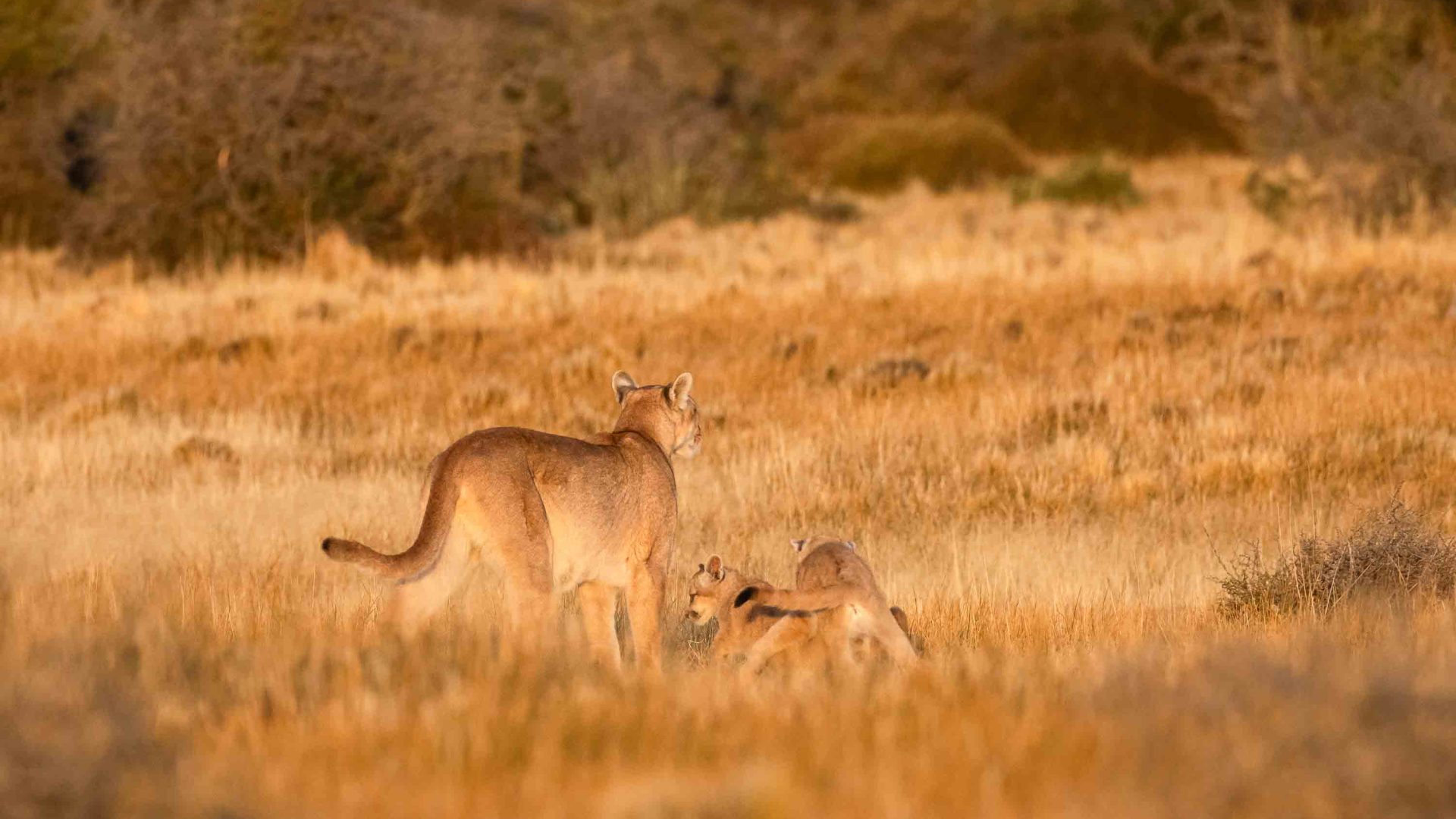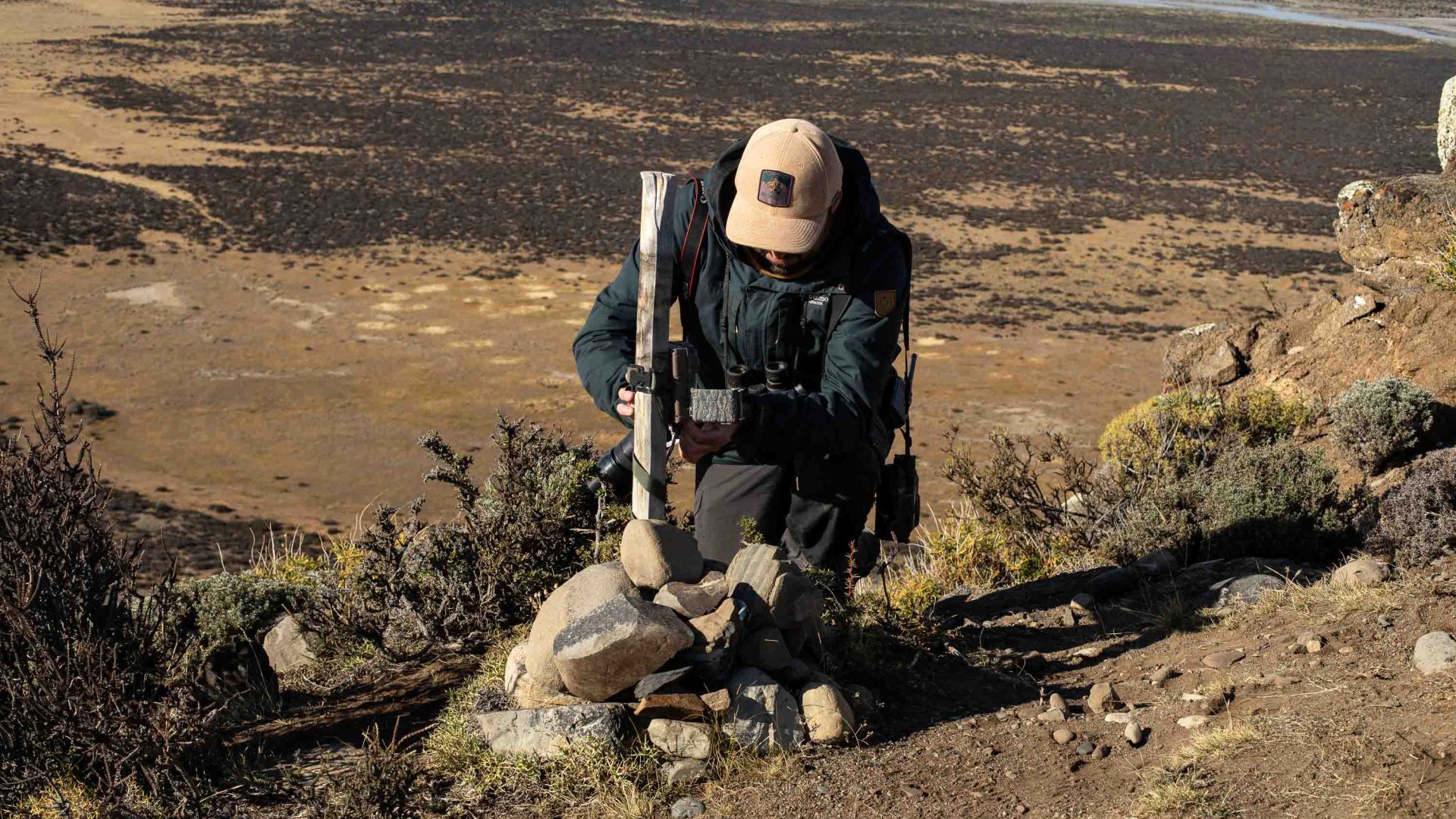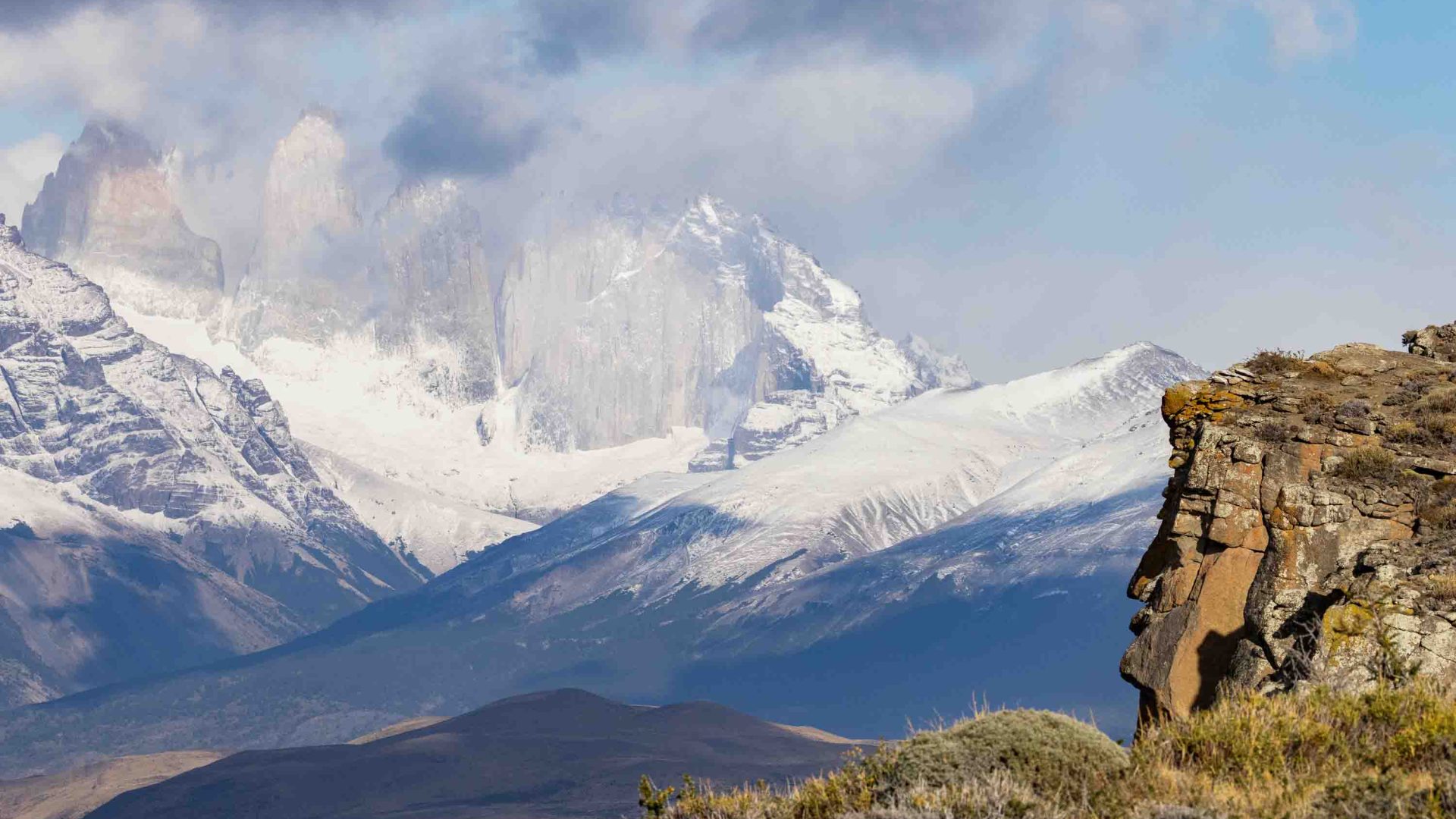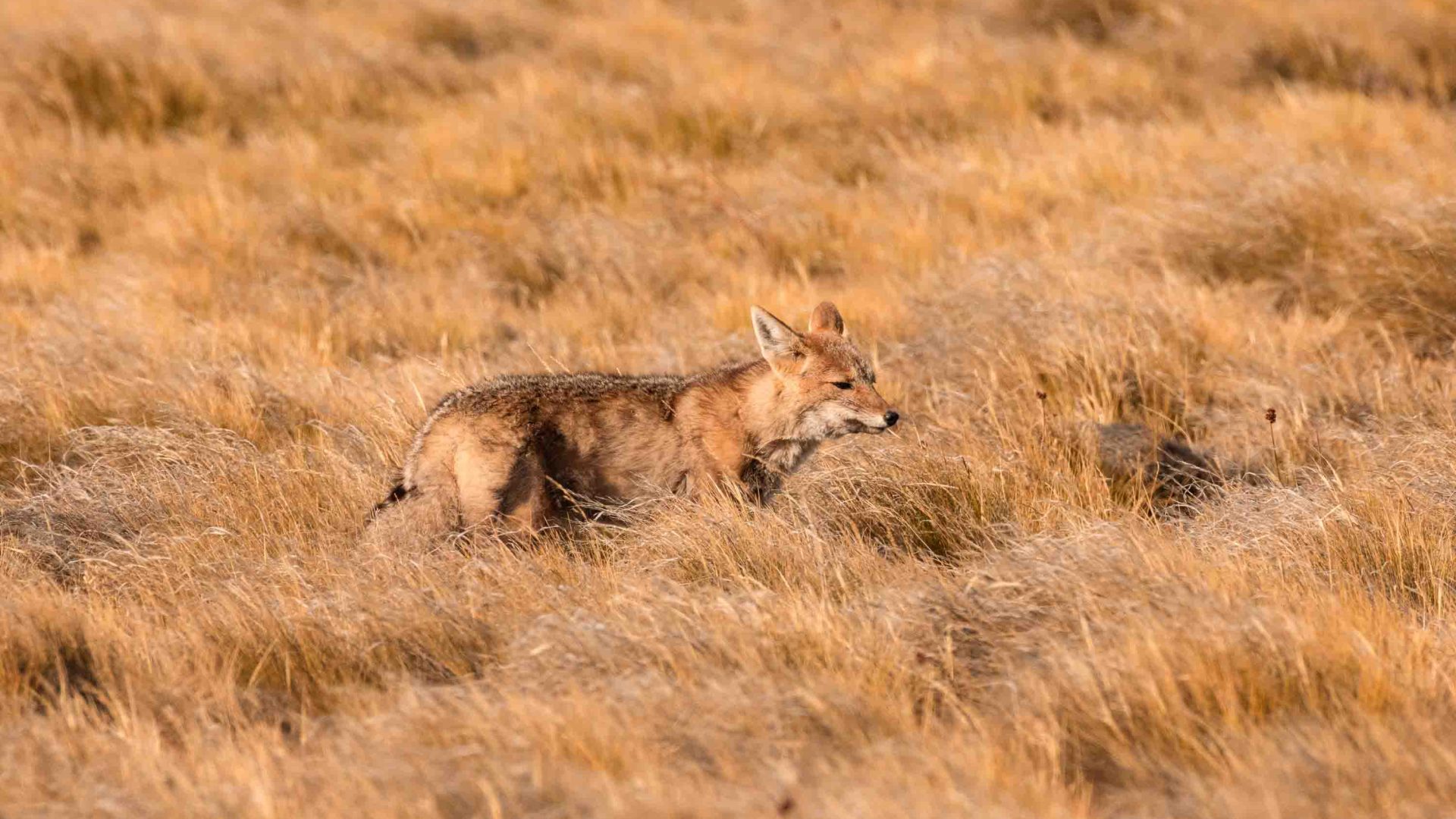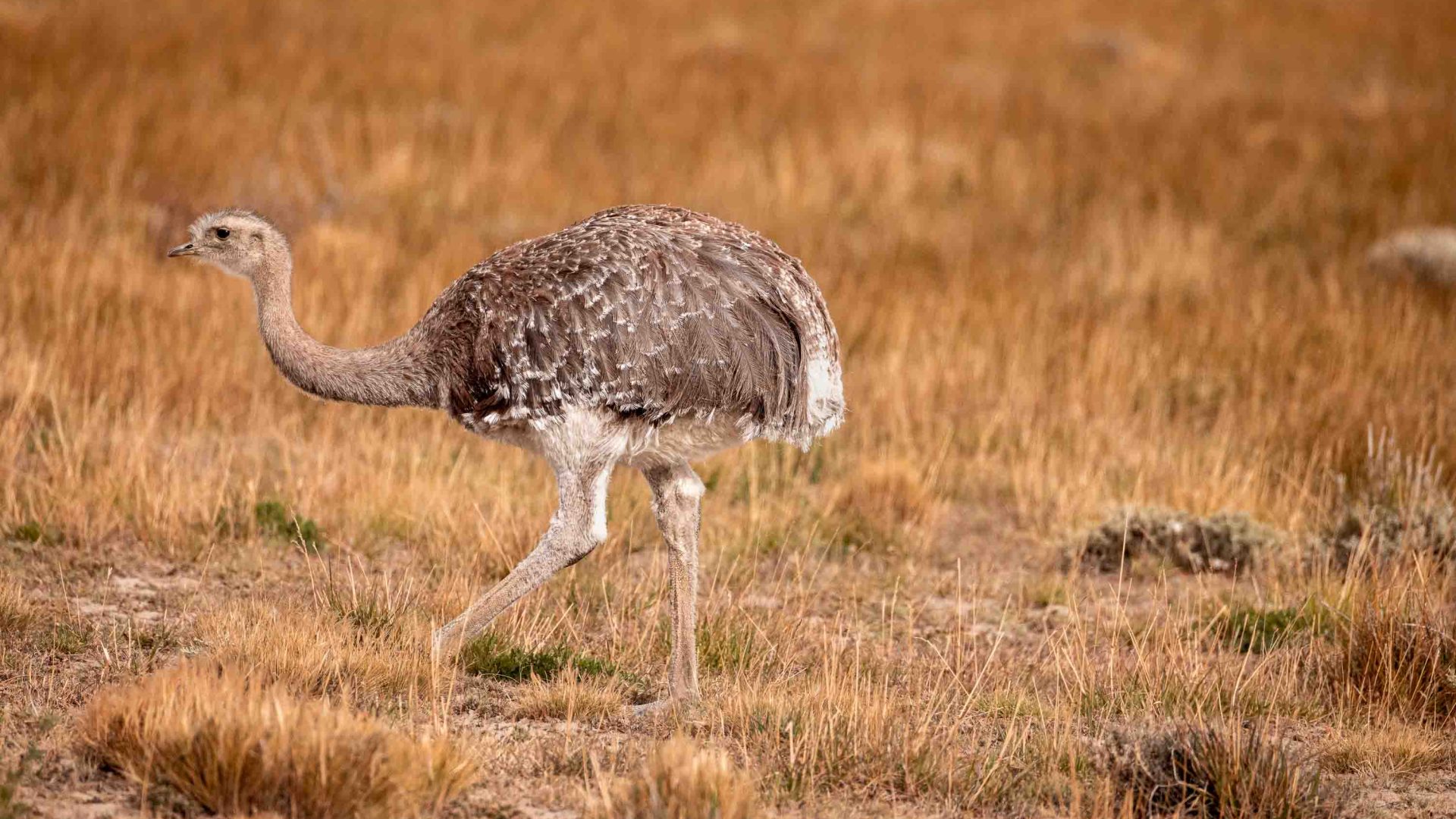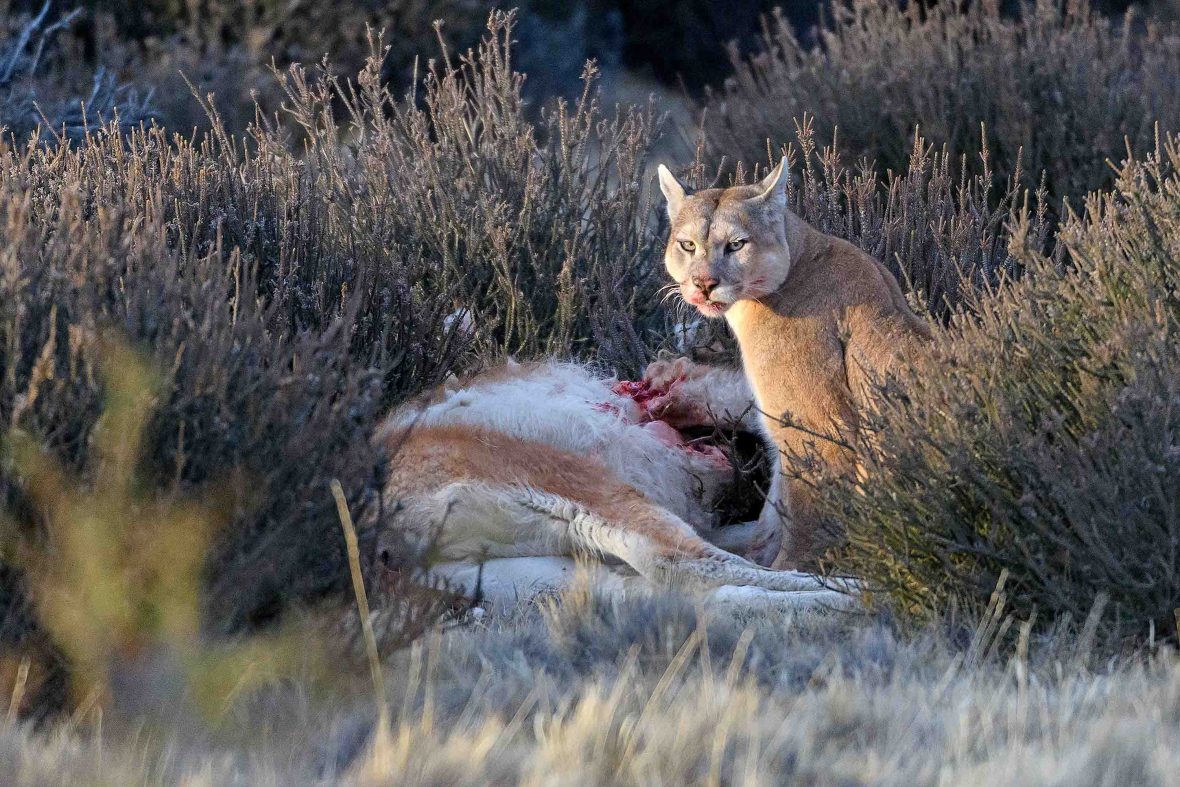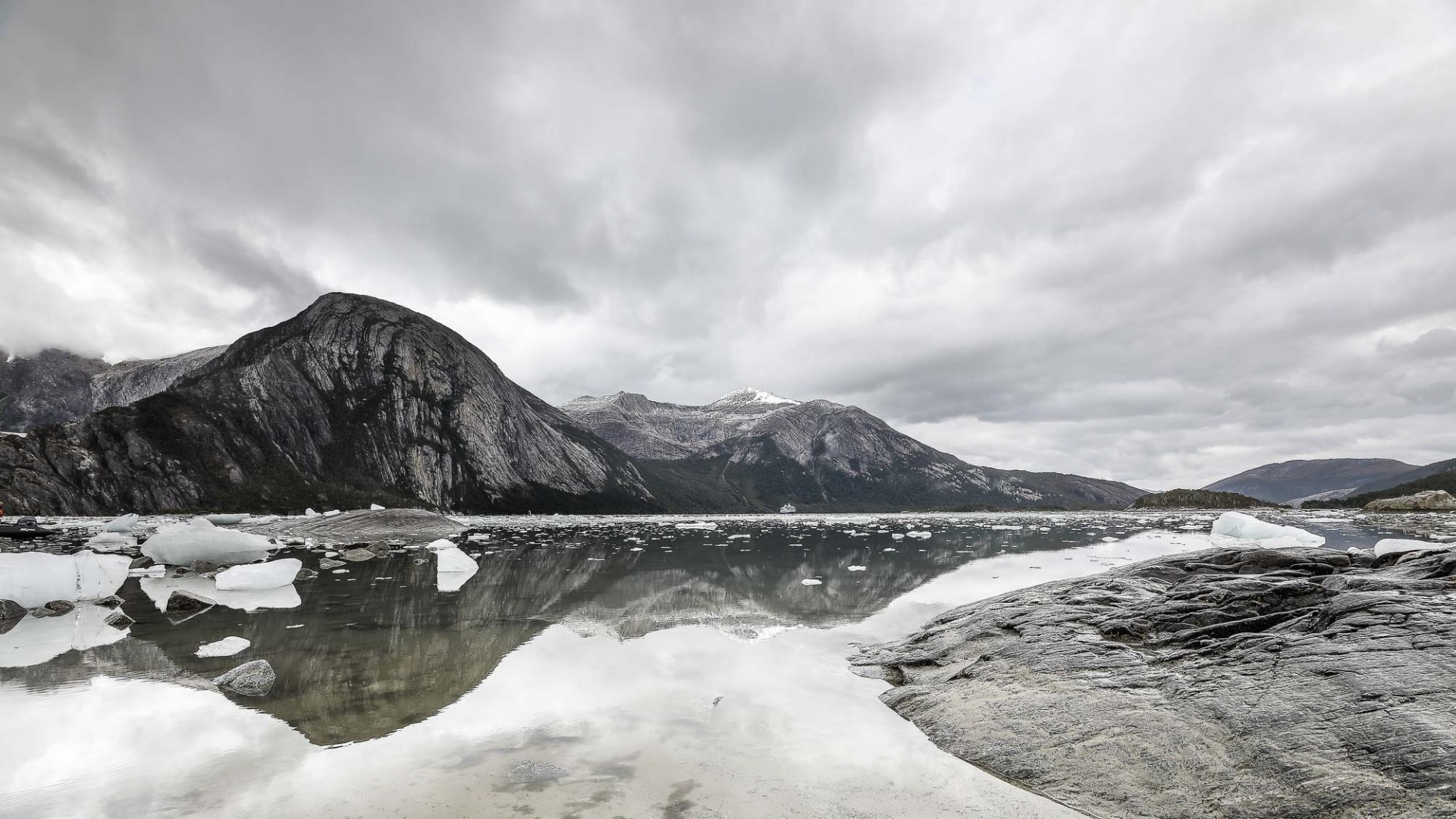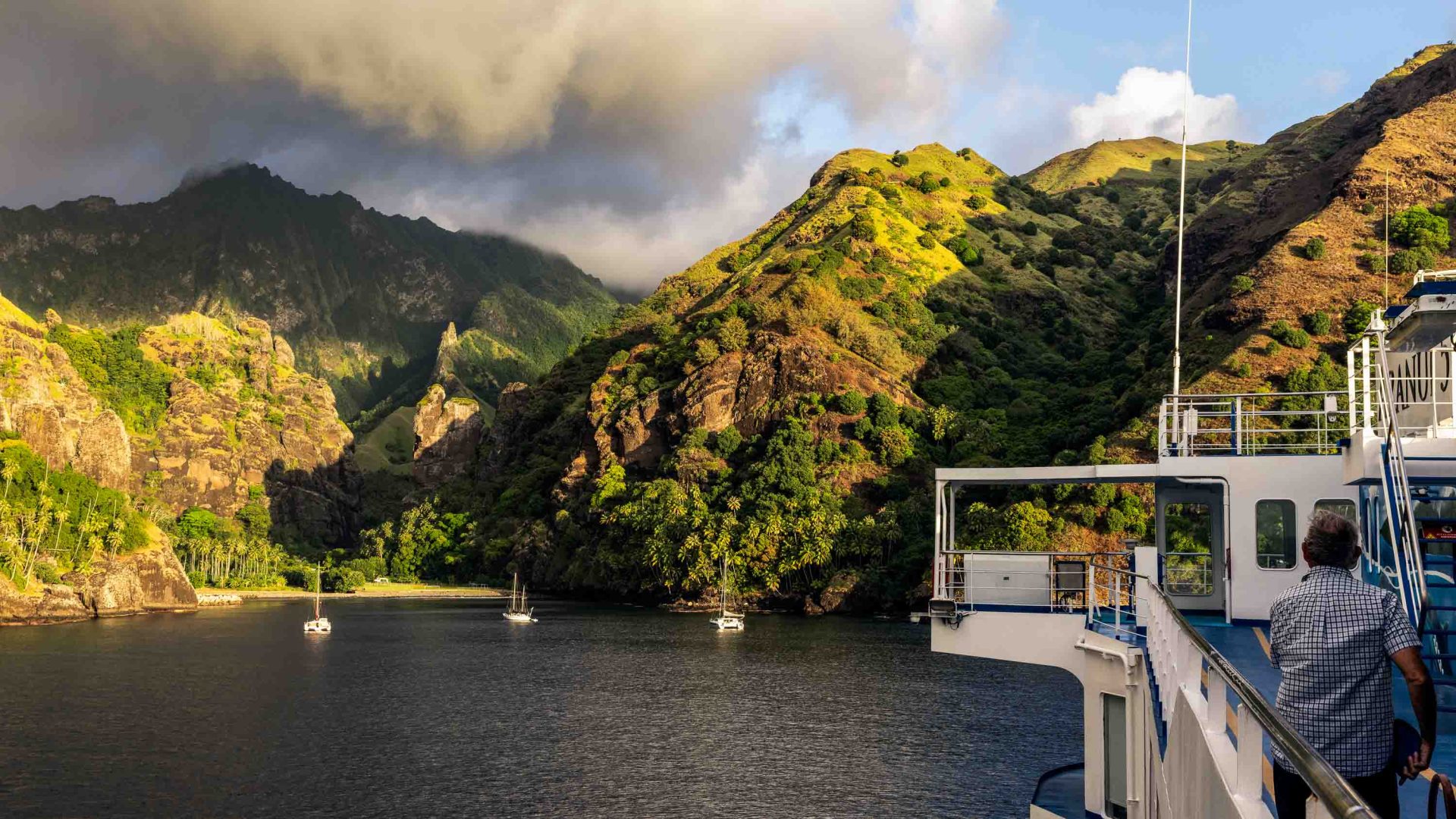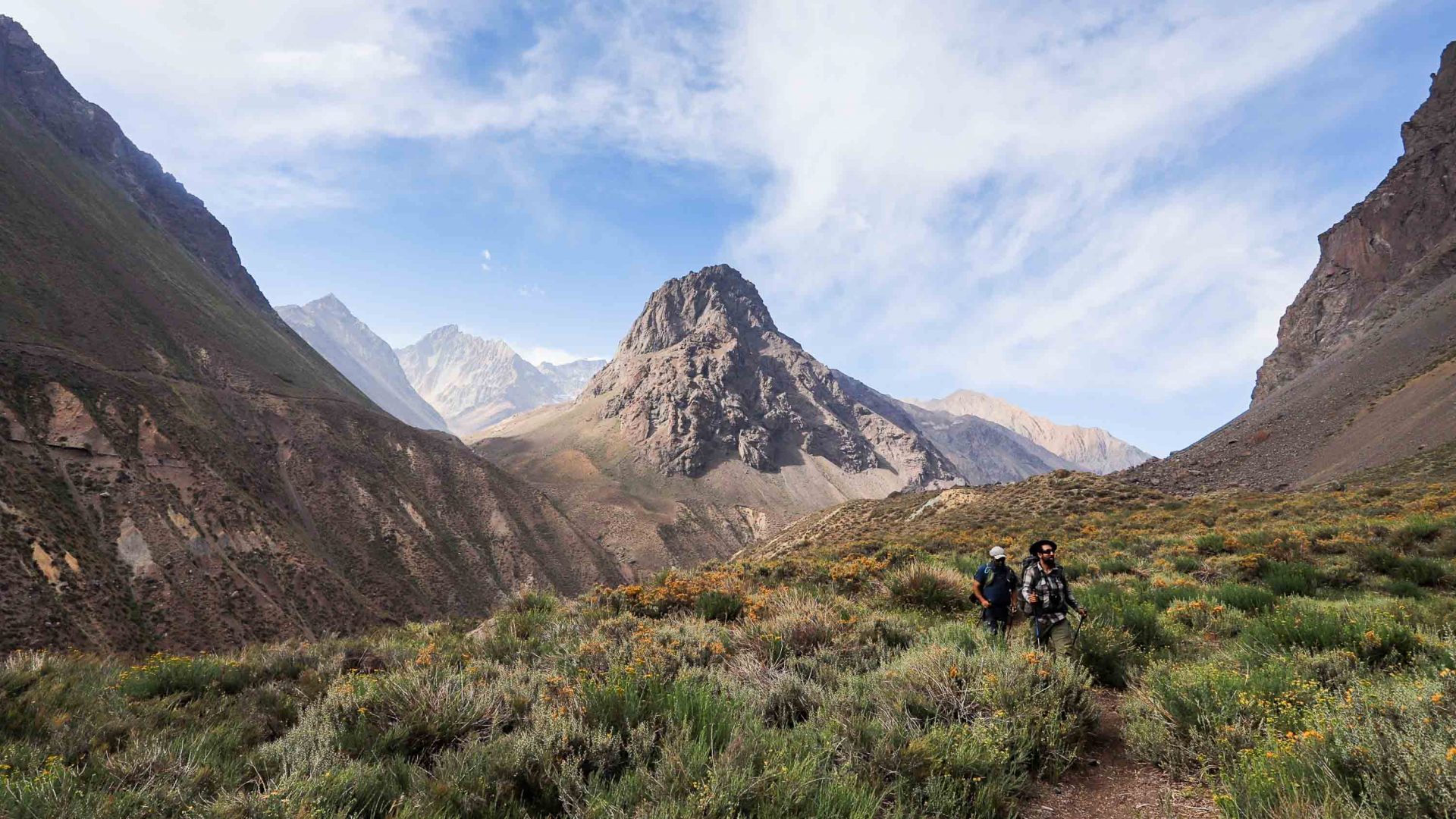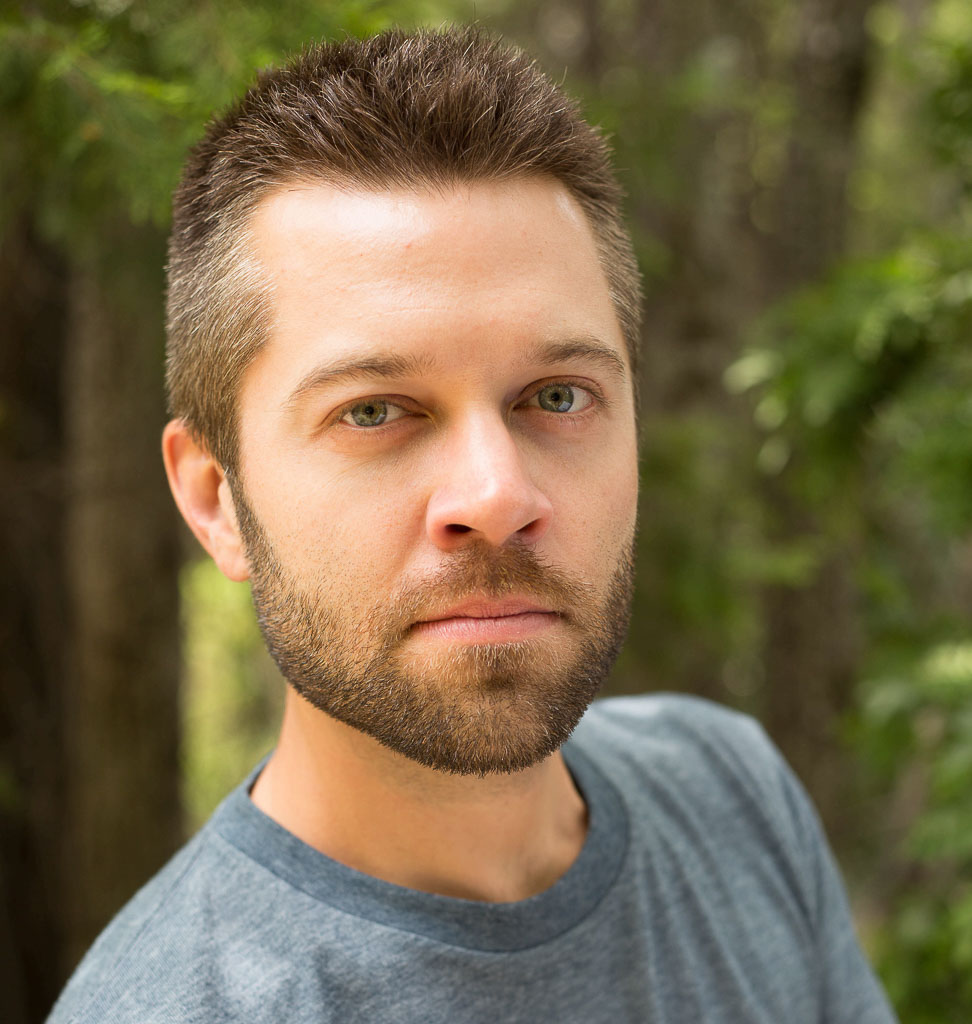It’s still dark when we head towards the LandCruiser. I’ve been told not to expect too much from this dawn puma safari—I’ve only got one crack at seeing them and, well, wild animals are capricious. It’s worth the early start though, if only to catch sunrise over the impressive towers of Torres del Paine National Park.
Before I can even buckle in, guide Daniela Ávalos Berner exclaims, “There’s been a sighting! A mother and three cubs.” Though I was quietly confident on waking that we’d have some luck, I wasn’t expecting it to happen this fast. Vamos! My fellow passengers, Lydia and Phillip, are similarly jolted out of any pre-dawn sluggishness—we’re suddenly wide-eyed, releasing binoculars and assorted cameras from cases while sliding ourselves into more layers in the startling chill. It may be summer, but the cold bites mercilessly in the sunless hours this far south.
Daniela starts the engine. She’s one of a team of scientists and guides at Estancia Cerro Guido, a ranch on the outskirts of the national park in Chile’s southernmost Magallanes region. At almost 100,000 hectares, it’s the largest estancia in the area, started in 1906. Some 300 sheep were first introduced to Patagonia 30 years earlier, and by 1930, there were two million, resulting in the displacement of the nomadic Aónikenk (or Tehuelche) peoples in the process—that’s another story entirely. Since 2019, the ranch has been doubling up as a boutique hotel, its restaurant offering unfettered views of the mountain range, giving guests a literal window onto the famous towers of Paine themselves.
